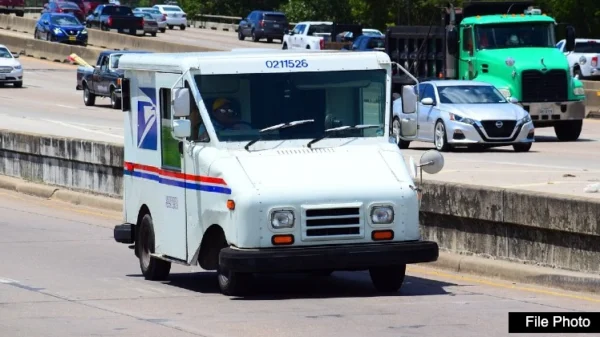The U.S. Postal Service (USPS) has gone to the dogs in recent years. America’s mail carrier lost roughly $6.5 billion in fiscal year (FY) 2023, and more than $100 billion over the past fifteen years. Not only has the mail slowed to a trickle, but the USPS has shown a basic inability to safeguard its employees. According to the agency, dog attacks on USPS employees rose to more than 5,800 cases in 2023, up from 5,300 in 2022. Dog bite incidents have remained stubbornly high in the past ten years and have even approached the 7,000 mark. Postal officials have been all bark and no bite in addressing this pressing issue. It’s time for an approach with teeth that protects employees, taxpayers, and consumers.
From rampant crime to heat exhaustion, letter carriers face all sorts of issues delivering the mail. But, as USPS Manager for Employee Safety and Health Awareness Leeann Theriault notes, no postal hazard is “more prevalent than a canine encounter. All it takes is one interaction for a letter carrier to possibly suffer an injury.” Carrier deaths from dog attacks are rare, but, unfortunately, they do happen. One tragic 2022 case involved a 61-year-old USPS worker who was mauled by five dogs. While the agency and employees have suggested safety tips such as keeping eyes on any dog, one-off suggestions aren’t enough to hit “paws” on this terrible situation.
Efforts to reduce injuries have been stymied by the surge in package deliveries. Unlike first-class mail, which can be dropped off at mailboxes, mail carriers typically deliver packages to consumers’ doors. Recipients opening their doors can easily lead to pets escaping and ensuing havoc. According to one station manager, “As package volumes are increasing, our carriers are going up the driveway now to deliver those packages. A lot of times, the customers don’t know that their dog will attack.”
The issue might be more manageable if packages were priced to reflect the risks of door-to-door activities. These additional resources could go toward procuring bite gloves, investing in additional training, and bolstering compensation payments. Yet, the systemic underpricing of parcels puts a tight leash on mitigation funding. According to the agency’s FY 2023 Annual Compliance Report, package revenues cover approximately 32 percent of all “institutional costs.” The agency bears These costs irrespective of mail mix and supposedly cannot be attributed to regular mail or packages.
The theory is that not all costs (e.g., worker compensation, Inspector General audits, cybersecurity investments) can be assigned to different categories, and all is well if packages cover a certain percentage of these collective costs. The USPS claims that packages’ 32 percent cost contribution is more than enough because the percentage is “well in excess of either the previous required level of 5.5 percent or the current 10.4 percent requirement derived from the [Postal Regulatory Commission’s (PRC)] formula.” The 32 percent figure seems low considering that packages make up more than half of the USPS’ total haul weight-wise. And virtually all of the USPS’ latest investments, including about $10 billion for new boxy trucks and hundreds of new package sorting machines, are geared toward parcel deliveries.
Until parcel pricing begins to reflect actual delivery costs, bite prevention efforts will go pathetically underfunded. Postal employees are not the only ones with a bone to pick with postal leadership. Underpriced packages are directly contributing to non-stop stamp price increases, including a slated 5-cent jump in July. America’s mail carrier ought to seriously re-examine its re-tail and employee safety approach and put its pricing policies on a short leash.
David Williams is the president of the Taxpayers Protection Alliance.



















